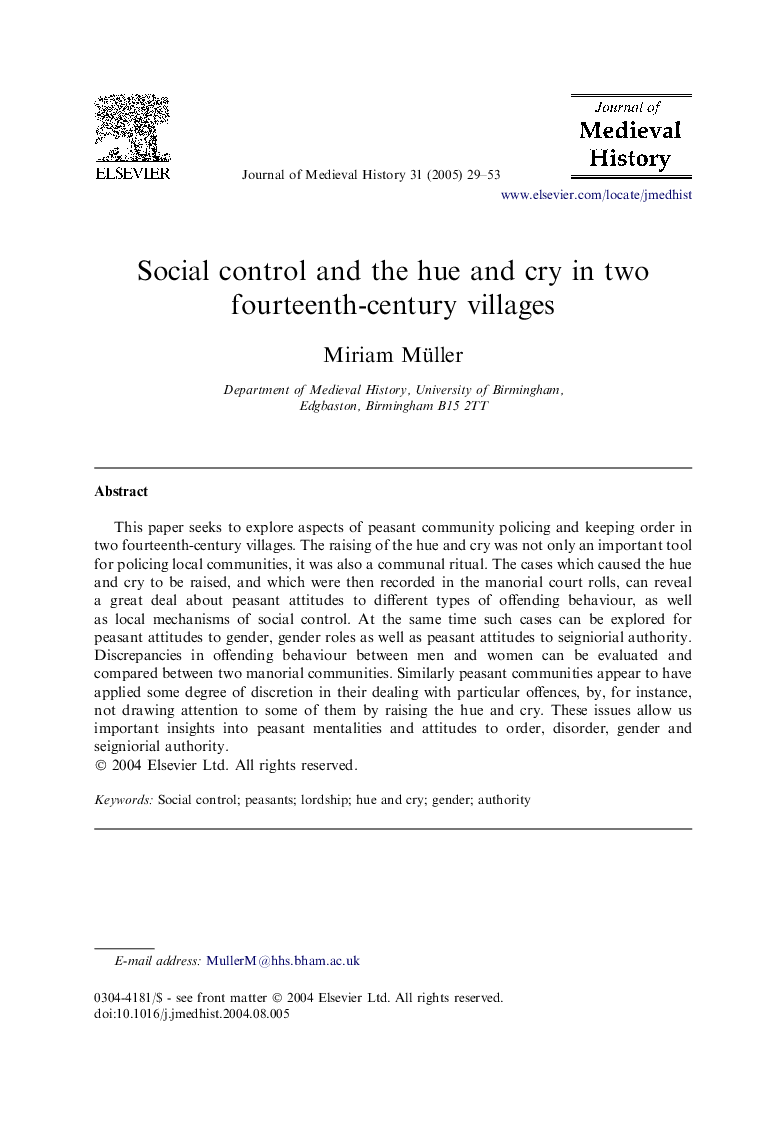| Article ID | Journal | Published Year | Pages | File Type |
|---|---|---|---|---|
| 10528503 | Journal of Medieval History | 2005 | 25 Pages |
Abstract
This paper seeks to explore aspects of peasant community policing and keeping order in two fourteenth-century villages. The raising of the hue and cry was not only an important tool for policing local communities, it was also a communal ritual. The cases which caused the hue and cry to be raised, and which were then recorded in the manorial court rolls, can reveal a great deal about peasant attitudes to different types of offending behaviour, as well as local mechanisms of social control. At the same time such cases can be explored for peasant attitudes to gender, gender roles as well as peasant attitudes to seigniorial authority. Discrepancies in offending behaviour between men and women can be evaluated and compared between two manorial communities. Similarly peasant communities appear to have applied some degree of discretion in their dealing with particular offences, by, for instance, not drawing attention to some of them by raising the hue and cry. These issues allow us important insights into peasant mentalities and attitudes to order, disorder, gender and seigniorial authority.
Related Topics
Social Sciences and Humanities
Arts and Humanities
History
Authors
Miriam Müller,
